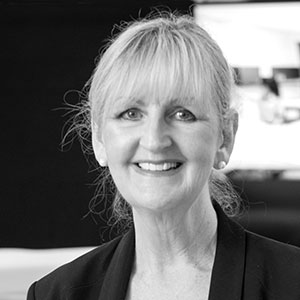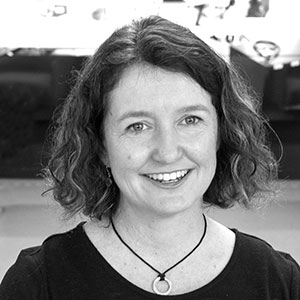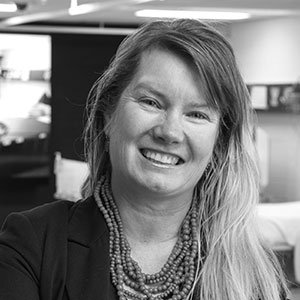UniSA’s School of Nursing and Midwifery – ranked by the QS in the top 50 nursing schools globally – is contributing close to 700 graduates each year to the profession. However, it still remains that Australia’s demand for nurses is projected to significantly exceed supply in the future.
A shortfall of approximately 85,000 nurses by 2025 and 123,000 by 2030 has been predicted in a report from Health Workforce Australia (now part of the Federal Department of Health).
The report also states that “nursing (and the wider healthcare system) in Australia must evolve, adapt and innovate in order to continue to provide effective patient care amidst ever increasing demand, emerging technologies and limited resources”.
 Head of UniSA’s School of Nursing and Midwifery, Professor Carol Grech, can certainly see ways in which the role of registered nurses
Head of UniSA’s School of Nursing and Midwifery, Professor Carol Grech, can certainly see ways in which the role of registered nurses
and midwives will evolve and adapt to a changing healthcare system.
“The health system is undergoing rapid changes and nurses and midwives are well placed to assume expanding roles across diverse settings,” Prof Grech says.
“Expanding and new innovative roles will require a rethink about how we educate nurses and mid-wives to equip them with new knowledge and skills to optimise their role within transformed healthcare environments. Increasing emphasis on keeping populations healthy, information technologies, quality of care and value for service will all play a part in transforming the health system, and nursing and midwifery roles will be transformed in the process.
“As our population ages, I see nurses taking on significant inter-professional leadership roles across hospital, community and home-based services, ensuring health consumers remain at the centre of their care.”
A major change that Prof Grech has witnessed over the course of her career is the growth of quality research evidence now available to inform everyday nursing and midwifery practice.
And at UniSA, nursing and midwifery research is exceptional. A 2015 five-star Excellence in Research Australia rating means that it has been benchmarked against other schools as being well above world-class.
Adding to that exceptional work already being undertaken at UniSA is a new research centre that has been developed in partnership with the Australian Nursing and Midwifery Federation (SA Branch), which is anticipated to become a flagship for health research in South Australia and nationally.
The Rosemary Bryant AO Research Centre is based in UniSA’s School of Nursing and Midwifery. Prof Grech believes it will be a significant gain for the State to undertake research that is informed, leading-edge and relevant to the needs of the health industry now and into the future.
Dr Rosemary Bryant AO, who is a leader in Australian nursing, says she would like to see research directed and informed by nurses and midwives who have intimate knowledge of the different environments in which they deliver care.
 For UniSA’s Dr Julie Fleet, Program Coordinator for the Bachelor of Midwifery, it is exactly this premise that has guided her recent research into new pain relief options for expectant mothers which will soon be made available in South Australian hospitals.
For UniSA’s Dr Julie Fleet, Program Coordinator for the Bachelor of Midwifery, it is exactly this premise that has guided her recent research into new pain relief options for expectant mothers which will soon be made available in South Australian hospitals.
Dr Fleet’s work has shown that the analgesic drug, fentanyl – administered as a small injection or nasal spray – is just as effective as pethidine injections but with fewer side effects for both mother and baby.
For Dr Fleet, this project first took seed eight years ago when she was working as a midwife in a rural hospital which offered fentanyl to women when an epidural couldn’t be accessed. Her curiosity was further piqued when she was involved in an ambulance transfer of a woman in labour and fentanyl was administered by nasal spray rather than an injection.
“I was surprised to hear that the ambulance service had been using the nasal route for the past decade but I couldn’t find any evidence of its use for labour pain in hospitals,” Dr Fleet says.
Dr Fleet then began investigating fentanyl’s suitability, with positive results.
“Our studies have shown that fentanyl resulted in less nausea and sedation, shorter labour, fewer babies admitted to the nursery, fewer breastfeeding difficulties and greater satisfaction, when compared to a pethidine injection,” Dr Fleet says.
“Women can self-administer a controlled dose using the nasal spray, under a midwife’s supervision, which helps them feel more in control of their pain management and avoids the need for additional intervention and painful injections.”
Dr Fleet says pethidine was first used for pain relief during labour in 1940, and has continued to be the most commonly-used opioid, despite pethidine not being the first-line choice in any other areas of medicine as we now have faster acting drugs, such as fentanyl, which are excreted more quickly from the mother’s and baby’s systems, reducing the length and severity of side effects.
“Pethidine has now been taken off the SA formulary for SA Health but as yet the procedures for the introduction of fentanyl are still going through an approval process at the major metropolitan hospitals,” Dr Fleet says.
“It feels great to work with a team of passionate researchers and clinicians who are striving to provide women with more choices to improve maternal and neonatal outcomes, as well as women’s birth experiences.
“It can however be quite frustrating to see the time it takes to introduce alternative options and how cost is a significant driver for any change.”
 Also looking at reforming care for consumers of the health system is Professor Marion Eckert, UniSA’s inaugural Professor of Cancer Nursing and director of the new Rosemary Bryant AO Research Centre.
Also looking at reforming care for consumers of the health system is Professor Marion Eckert, UniSA’s inaugural Professor of Cancer Nursing and director of the new Rosemary Bryant AO Research Centre.
Prof Eckert is working with a team to develop a statewide survivorship monitoring tool to examine the quality of life of all people diagnosed with cancer. The aim of this research is to establish effective monitoring of quality of life, care and survival.
It is significant work considering figures from the Australian Institute of Health and Welfare estimate there to be approximately one million people living with a cancer diagnosis and a further 130,470 new cases of cancer will be diagnosed in Australia this year with that number set to rise to 150,000 by 2020. In addition, 66 per cent of people diagnosed with cancer in Australia are still alive five years after a cancer diagnosis.
The combination of increasing cancer cases and longer survival means that more people are living with a diagnosis of cancer but they are not necessarily surviving well.
It’s this last point in particular that is driving Prof Eckert’s research.
“The focus of our research has been on supportive cancer care and survivorship from a point of view of establishing quality data measurement systems and translating research findings into improved service delivery to reduce the burden of cancer on the community. Critical to this is identifying contemporary issues in health care and effective partnerships to ensure that we improve quality of life and support wellness,” Prof Eckert says.
“We don’t really have a good understanding of the impact of cancer on people’s life, their family, their anxiety, depression, what their fear of reoccurrence is, how mobilised or polarised they are by their diagnosis – for example their fear of returning to work or if they are 25 years-old the impact of how they feel about it from a fertility point of view.
“We are looking at how we can monitor these people and get a good understanding of how they are feeling both physically and mentally.”
The findings from the Australian-first project could then be used to inform what supportive care practices are suitable.
“When we talk about the transformation of health, there’s certainly potential for innovative health care roles that we don’t know exist yet,” Prof Eckert says.
“I think the way forward should be nurse-led survivorship clinics that take into account the management of chronic disease and looking at coordination of care – again, a nurse-led coordinated care model would be brilliant.”
Prof Eckert says that in rural areas of the State, the opportunity for improving knowledge and services is vast and that exploring further reach through telehealth and the use of digital technology is on the horizon.
“Nurses are well placed to lead health service reform and provide nurse-led services in rural and remote areas to further support people with cancer,” Prof Eckert says.
“Distance should not equate to disadvantage and therefore further research is required to explore quality of life and key concerns such as depression and anxiety in rural and remote areas. There is a need to inform quality care and build further support for people with a cancer diagnosis who feel isolated.
“This could all lead to opportunities for nurse-led intervention, clinics and telehealth support services and reach through digital health. These are roles that are not defined or developed yet.
“To know what services we need to provide though, we need to establish a consistent monitoring system that is embedded on an ongoing basis.”
In another project, Prof Eckert is looking at a coordinated approach to cancer screening prior to diagnosis. A ‘one-stop shop’ for cancer screening and health assessment will be trialled at UniSA’s City East campus from next year.
“If we can develop a good model that looks at cancer screening and incorporate chronic disease assessment, we could potentially take it out to the GP super clinics that SA Health coordinates,” Prof Eckert says.
“These could all be nurse-led screening prevention/ chronic disease clinics.
“Nurses are instrumental in terms of organisational change and they play a huge part in good change outcomes. Nurses are the ones who will lead the research at a clinical level.”
Twenty-one year-old nursing student Emmanuel Escarian is one such nurse who could be working on implementing Prof Eckert’s research in the future.
The third-year nursing student says working as part of collaborative health team has been one of the most enjoyable parts of his work during placements so far.
“Being able to work with other healthcare team members is amazing because you can learn a lot from them depending on their specialities,” Emmanuel says.
“My placements have very much had a collaborative aspect to them in which I’ve been able to work with other health professionals as part of a team. It makes it easier for us as nurses because we know we can rely on other health professionals for input to improve our care for the patient.”
Emmanuel decided to study nursing as he has a strong interest in human anatomy and physiology.
“I get to learn directly from patients how the body works and at the same time I am helping them to get better,” he says.
For future UniSA nursing students, a partnership with Calvary Health Care Adelaide could be a large part of their study and placements.
UniSA has signed a Memorandum of Understanding with Calvary to explore development of a UniSA clinical school. The partnership would aim to deliver excellence in nursing care, allied health and clinical education in South Australia by way of a Master of Science and a PhD (Research) in Medicine and Allied Health, as well as a range of previously unavailable research fellowships and internships.
And as Australia’s demand for nurses and other health professionals only grows with increased health needs, advances in health education and increased industry collaborations are certainly a step in the right direction.
Connect with the Education in Nursing, Midwifery and Health Science Research Group
EdResNurs@EdNurs
Connect with Professor Marion Eckert
@marioneckert5